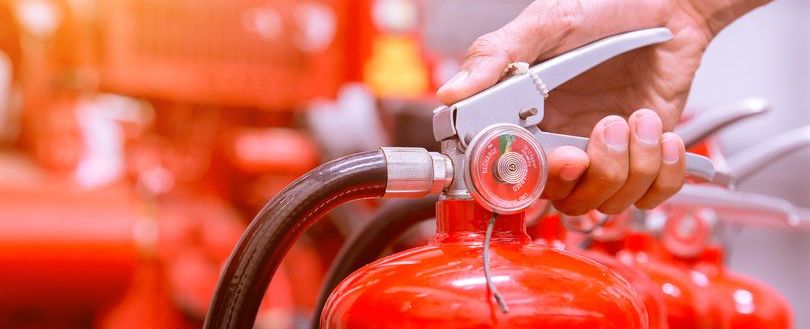
93% of fires extinguished by Portable Fire Extinguishers 2022
Like it? Share it!
07 April 2022
Following the comprehensive survey reported in 2003, which was followed up by another similar FIA survey in 2008, technicians from companies in the four main trade associations in the UK undertook to ask businesses that had used an extinguisher on fire the same questions in 2021. Some significant trends have appeared in the 2021 survey which cannot be ignored.
The number of fires being successfully extinguished by portable extinguishers has increased from 80% in 2003 to 93% in 2021. The percentage of fires the FRS is called to has dropped slightly from 75% to 73% in the same time frame.
The associations believe people need to be reminded of the value portable fire extinguishers provide to society. It is recognised that a business suffering a fire incident may not recover and close down. If it does, local employment and the businesses nearby providing services will suffer with a ripple effect. The simple fire extinguisher, found everywhere, is playing an increasing role in business continuity.
Often we see reports that extinguishers are being removed from buildings or that people are being encouraged to ignore them and evacuate their building. But why? If someone drops a lit match on a carpet, they do not evacuate the building, they calmly tread on the match and extinguish the flame. The survey confirms the same principle applies to small fires for which an extinguisher should be used to stop the fire spreading. That happens 93% of the time nowadays.
The 2003 report suggested fire extinguishers actually save £5.1 million each year in terms of fire service resources and saved the UK economy over £500 million. Plus 1,629 injuries and the loss of 24 lives were prevented.
The 2006 Fire Safety Order made fire legislation easier for employers to understand what they need to do to comply. Fire Risk Assessment continues to be vital, but the portable extinguisher landscape has significantly improved also. The installation standard (BS5306-8) has been revised twice. One of the main improvements has been to make sure the most suitable extinguisher is the nearest one to any known hazard e.g. a Wet Chemical extinguisher (most suitable for cooking oil/fat fires) in or near kitchens; a Carbon Dioxide or Powder extinguisher (most suitable for petrol fires) in motor garages or a water-based extinguisher (most suitable for cardboard and clothing fires) in office/retail environments.
The stuff inside extinguishers has become more efficient since 2003 – more bang for your buck. The way to use an extinguisher has become more uniform and is intuitive. Whilst training the use of extinguishers is essential, they are very simple to operate and easy to use. We strongly believe that these factors, when drawn together, have helped improve the chances of extinguishing a fire with an extinguisher successfully.
So, what else can we conclude from the data?
|
What burnt? |
2008 |
2021 |
Comment |
|
Oil/flammable liquids |
26% |
8% |
Decrease could be due to Health & Safety driven principle to manufacture non-flammable products/liquids. |
|
Vehicles |
22% |
18% |
Decrease could be due to greater use of diesel cars since 2008; petrol being easier to ignite. |
|
Electrical |
19% |
25% |
Increase could be down to a simple societal reliance on electrical products/devices. |
|
Waste bins/rubbish |
17% |
15% |
Minor decrease could be due to better control of waste. |
|
Cooking oils/grease |
13% |
12% |
No significant change |
The 2021 survey reveals the top five reported causes of fire were:
|
Electricity |
19% |
|
Hot Work |
19% |
|
Battery operated equipment |
19% |
|
Open Flame |
10% |
|
Cooking |
9% |
In 2008, the general interpretation was that any extinguisher will put out a small fire and that, once a fire becomes too big, it is difficult to tackle with any size or any number of extinguishers. Analysis of the 2021 survey confirms the same.
The full results are published as a news item on the fia.uk.com website alongside the 2003 report. The FIA will continue to champion the use of portable fire extinguishers which provide a common sense solution to extinguish fires before they develop to a size that threatens life, property and business continuity.
*Complete data available from the FIA if required
The Fire Safety Order says ‘Where necessary in order to safeguard the safety of relevant persons, the responsible person must ensure that the premises are equipped with appropriate fire-fighting equipment and fire-fighting equipment is simple to use and indicated by signs. The responsible person must take measures for fire-fighting in the premises and nominate competent persons to implement those measures and ensure that the number of such persons, their training and the equipment available to them are adequate.’
For the successful extinguishing of fires to improve from the 2021 figure of 93%, employers should use third party accredited suppliers which are competent to place the right extinguishers in the right places and train their employees how to use them.
